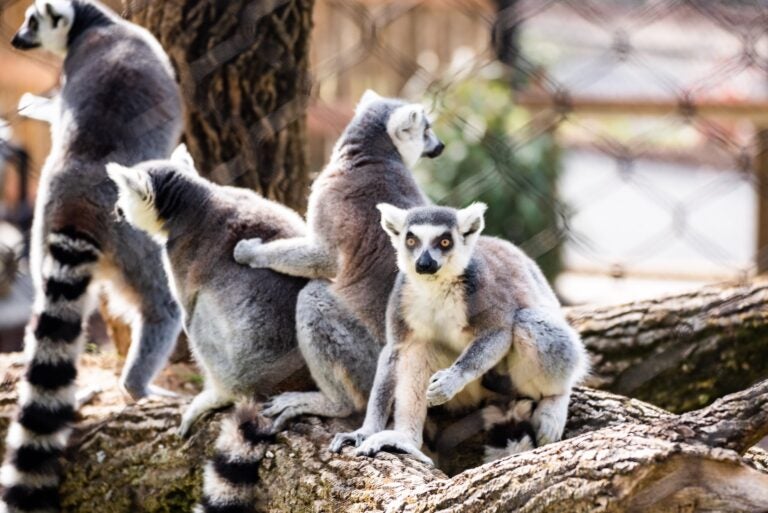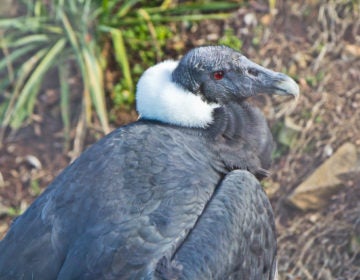Endangered lemur exhibit opens as part of major expansion at Delaware’s only zoo
The Brandywine Zoo’s new lemur exhibit is part of a species survival plan and is one step in the biggest capital improvement plan in the zoo’s 115-year history.

A group of lemurs are now part of the Brandywine Zoo’s newest exhibit focused on animals from the African island of Madagascar. (Delaware State Parks)
Nearly 8,800 miles from their natural habitat in Madagascar, off the coast of Africa, a group of eight lemurs now call Wilmington’s Brandywine Zoo their home.
The exhibit is the largest capital improvement in the zoo’s 115-year history.
“At nearly 4,000 square feet, the Madagascar exhibit is one of Brandywine’s largest display habitats,” said Shawn Garvin, Department of Natural Resources and Environmental Control Secretary. “This new walkway that loops around the exhibit adds extra room for visitors to explore, and the pavilion provides extra space for other gatherings — once it is safe to do so — right here in the city.”
The zoo’s newest residents include four ring-tailed lemurs from the Bronx Zoo and two black-and-white ruffed lemurs from the Duke Lemur Center in Durham, North Carolina.

A male and female pair of crowned lemurs from the Durham center will also be on display. The couple was brought as a breeding pair on the recommendation of the Association of Zoos and Aquariums. Just 30 crowned lemurs exist in the Americas, 18 males and 12 females. The Brandywine Zoo will be one of only 12 locations in North America where crowned lemurs can be seen by the public.
“As part of this habitat, we included a space for zookeepers to interact with the animals while training and hosting keeper-talks for visitors,” he said.
Three radiated tortoises, a critically endangered species, round out the new exhibit’s residents.
The climate in Madagascar varies from 50 to 80 degrees, and rarely gets below 46 degrees Fahrenheit. As such, the animals won’t be on display if the temperature drops below 45 degrees.
Work on the new exhibit took about 10 months to complete and cost $3.5 million. The zoo, which is run by the state Division of Parks and Recreation, got the funding from the state Bond Bill and matching grant from the Land and Water Conservation Fund.
The opening of the exhibit this month, and construction of a nearby quarantine building, marks the end of phase two of the master plan to reimagine the zoo’s scope and draw more visitors. In 2018, the state reported 48,000 visitors spent time at the zoo. In 2015, attendance topped 90,000. That decline in attendance comes after the zoo’s only tiger, Zhanna, an Amur tiger, was moved to the Bronx Zoo in 2016 to join a program to help extend the life of her species. Attendance may have also been affected by the loss of the zoo’s cornerstone exhibit, the monkey house, which was destroyed by a falling tree in 2013.
“The master plan focuses on improved animal welfare and guest experiences,” Garvin said. “Once complete, the zoo will offer interactive features for our guests to use.”
The next phase of construction includes a dramatic new entryway and a new South American wetlands habitat that will feature flamingos, sloths, and the world’s smallest deer, the Southern Pudu.
The Brandywine Zoo has modified its attendance procedures under the state’s coronavirus restrictions. To better spread out visitors, guests can order tickets for three timed sessions each day. Masks must be worn by all visitors ages 5 and older.

Get daily updates from WHYY News!
WHYY is your source for fact-based, in-depth journalism and information. As a nonprofit organization, we rely on financial support from readers like you. Please give today.






